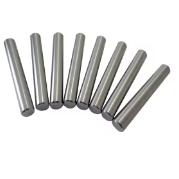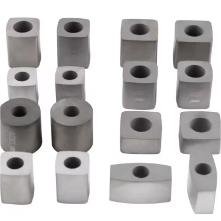**Boiler Plate Metal: The Quiet Workhorse Behind Everyday Giants**
(What Is Boiler Plate Metal)
Ever wonder what holds skyscrapers up or keeps bridges from wobbling? The answer might be simpler than you think. Boiler plate metal isn’t a flashy superstar, but it’s the backbone of countless structures and machines we rely on. Let’s break down what this material really is and why it matters.
Boiler plate metal is thick, strong steel rolled into flat sheets. It’s tough, durable, and handles heat like a champ. The name comes from its original job—building boilers. Back in the day, steam engines and industrial boilers needed something that wouldn’t crack under pressure or high temperatures. Boiler plate metal stepped up. Today, it’s everywhere. Construction sites, shipyards, factories—you name it.
How is this stuff made? It starts with molten steel. Workers pour it into slabs, heat it until it’s glowing, then roll it flat. The rolling process squishes the metal into sheets of specific thicknesses. After cooling, it’s cut into sizes for different jobs. Thicker plates handle heavy loads, like supporting buildings. Thinner ones might become parts of machinery or storage tanks.
Why pick boiler plate metal over other materials? It’s simple. This metal doesn’t quit. It resists bending, warping, and rust better than many alternatives. It laughs at extreme heat, making it perfect for furnaces or pipelines. It’s also easy to weld, so builders can shape it into whatever they need. Imagine trying to assemble a bridge with a material that cracks when you tweak it. Boiler plate metal avoids that headache.
Walk through a city, and you’ll spot this metal in action. Skyscrapers use it for beams that hold up dozens of floors. Bridges rely on it to handle the weight of cars, trucks, and storms. Even ships count on boiler plate metal for hulls that survive ocean saltwater and waves. In factories, it forms the skeletons of heavy machinery. Without it, modern manufacturing would grind to a halt.
Boiler plate metal isn’t just for industry, though. Creative minds repurpose it for art, furniture, or custom projects. Its rugged look and strength make it a favorite for designers wanting a mix of function and style. A coffee table made from boiler plate metal won’t just hold your mug—it could probably support your car.
Not all boiler plate metal is the same. Grades vary based on carbon content and other additives. Low-carbon versions are easier to shape. High-carbon ones are harder and better for high-stress jobs. Some types include alloys like chromium or nickel for extra corrosion resistance. Picking the right grade is like choosing the right tool—you match it to the task.
People often overlook boiler plate metal because it’s hidden inside structures or painted over. But next time you cross a bridge or stare up at a steel-framed building, remember what’s holding it all together. This material doesn’t need the spotlight. It does its job quietly, reliably, and without fuss.
Maintenance matters, too. Even tough materials need care. Regular inspections catch rust or wear before they become problems. Protective coatings shield the metal from moisture and chemicals. Proper handling ensures it lasts decades, not just years.
(What Is Boiler Plate Metal)
The world leans on materials that balance strength and adaptability. Boiler plate metal nails both. It’s not glamorous, but without it, cities would look very different. From the engines of old steam trains to the bones of modern megastructures, this metal has shaped history—and will keep doing so as long as we build big.
Inquiry us
if you want to want to know more, please feel free to contact us. (nanotrun@yahoo.com)


